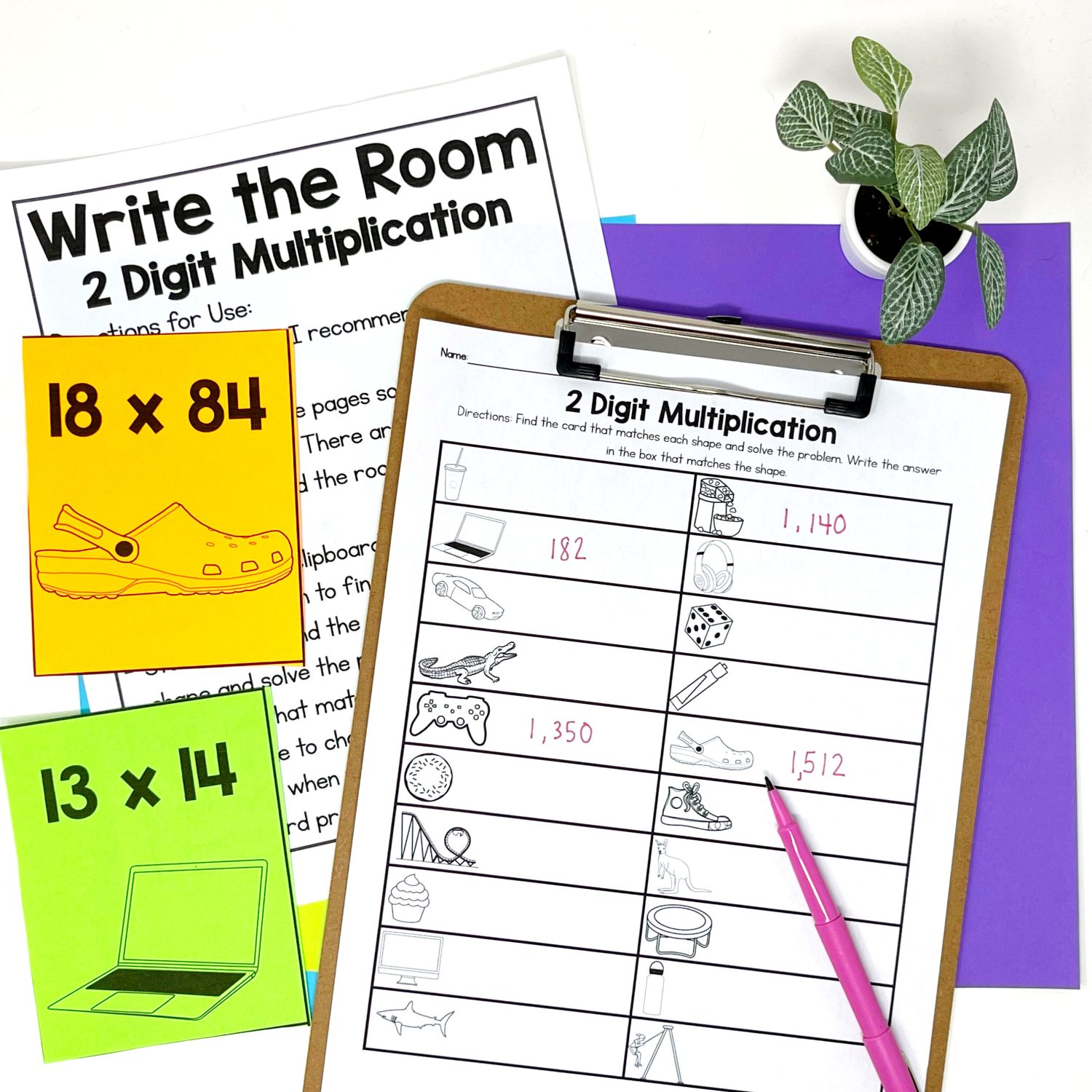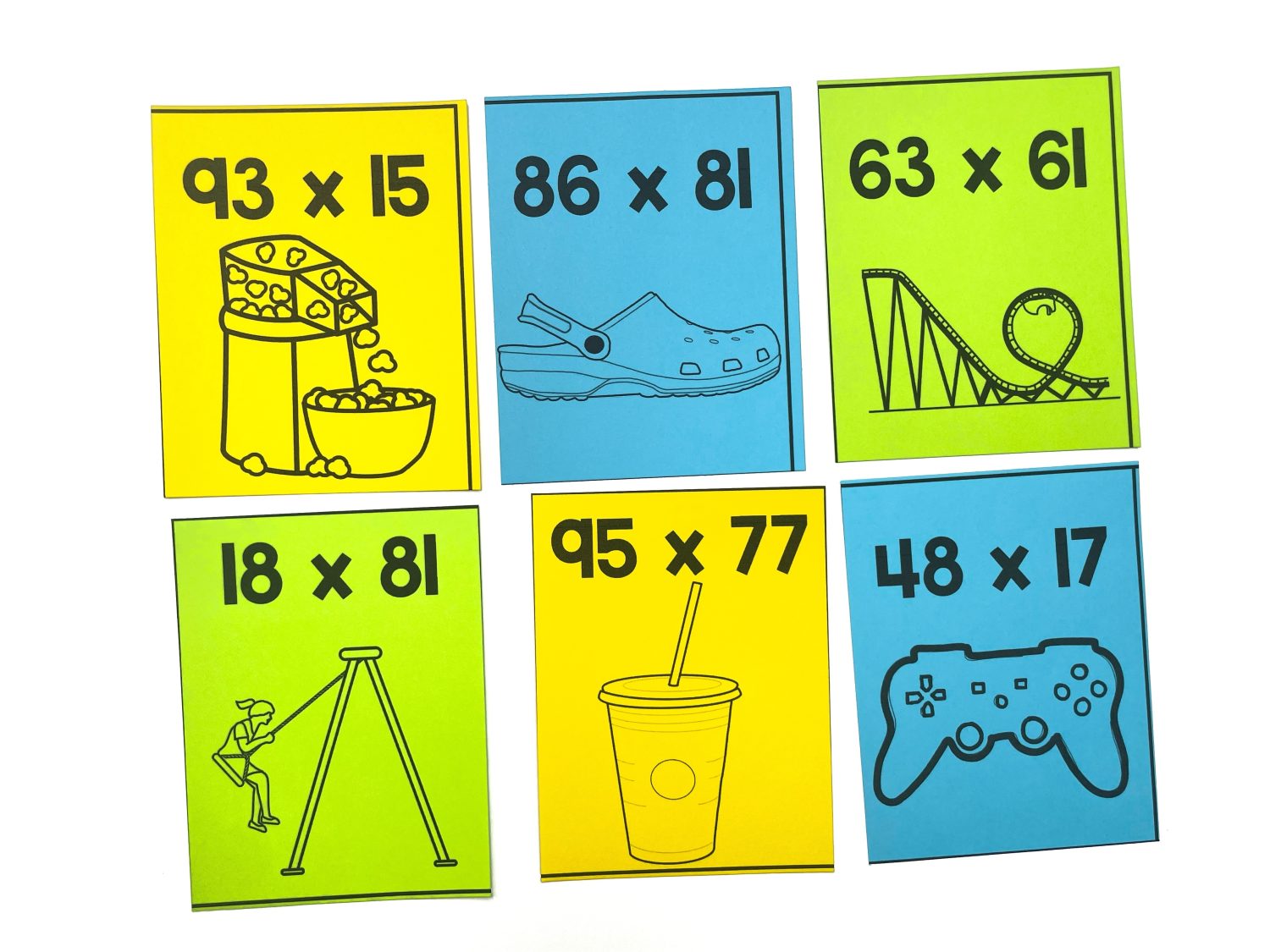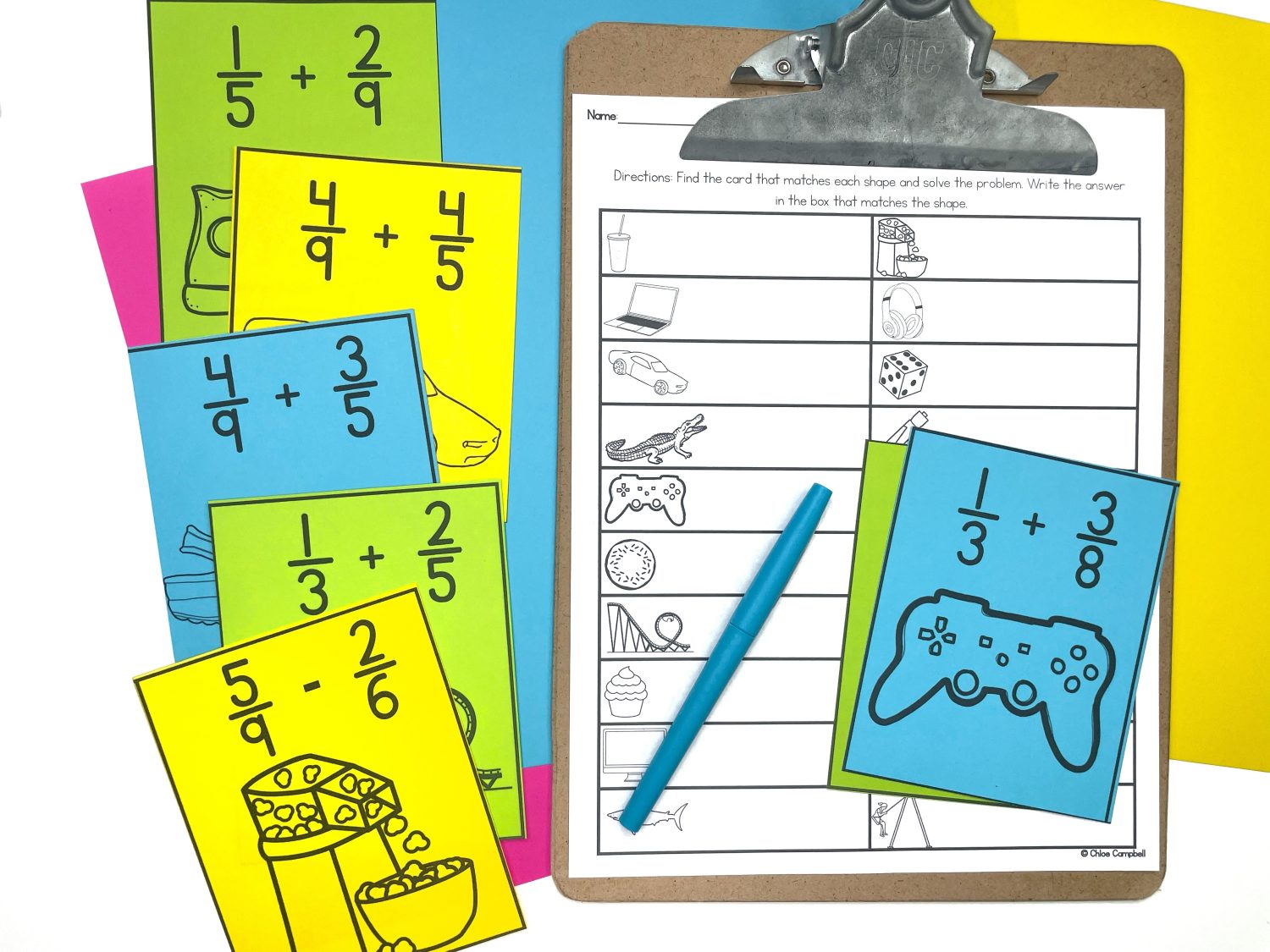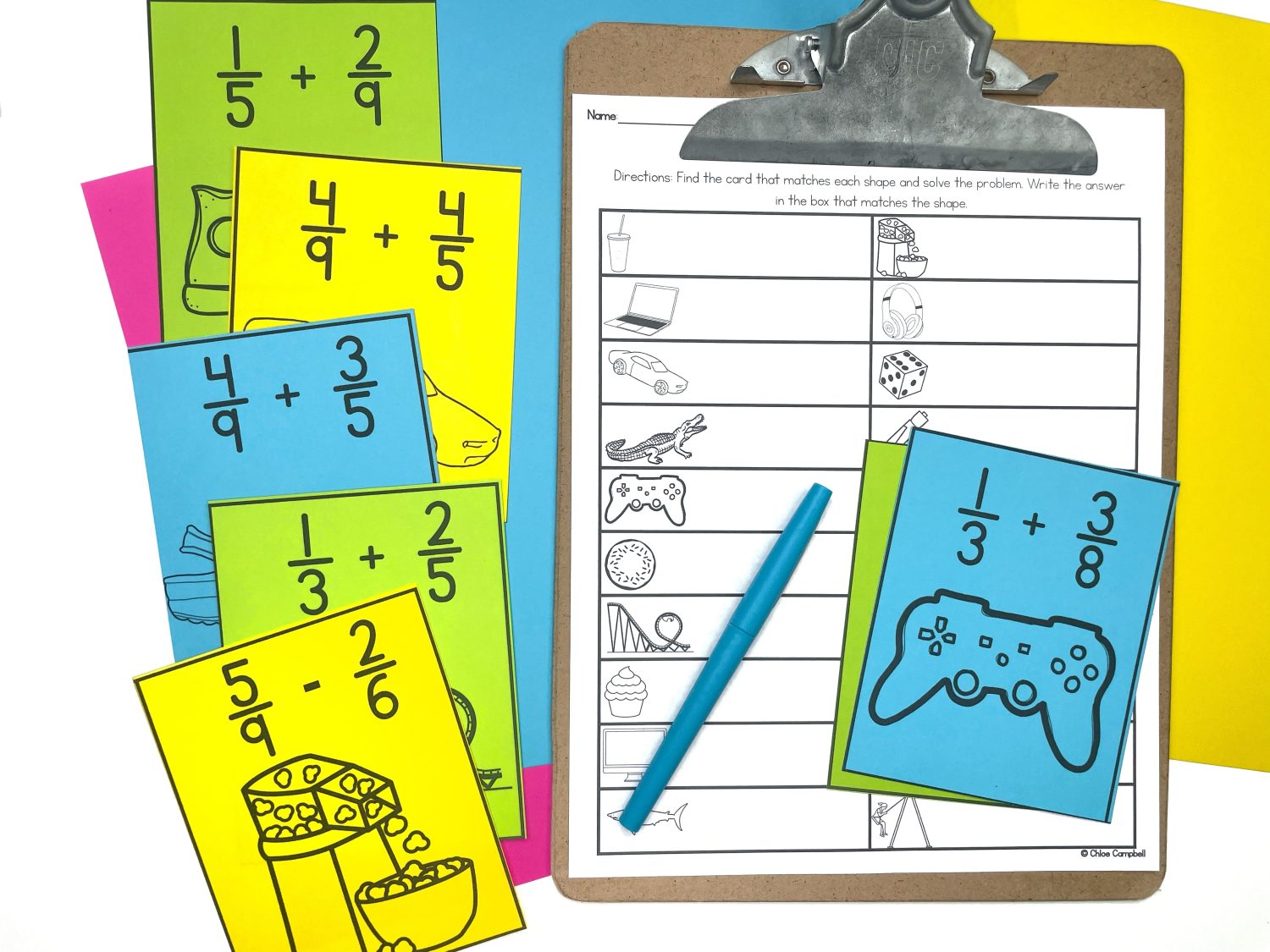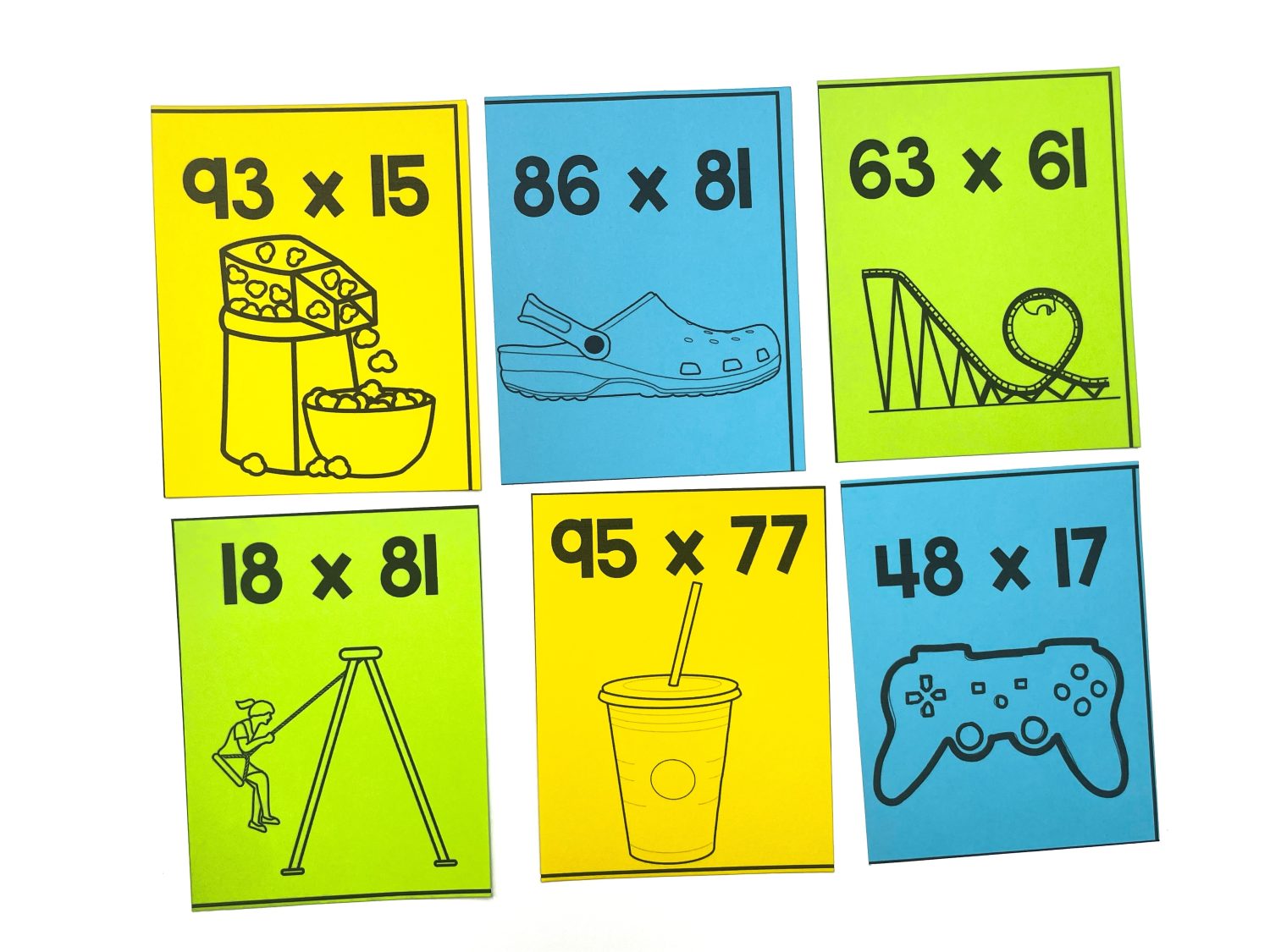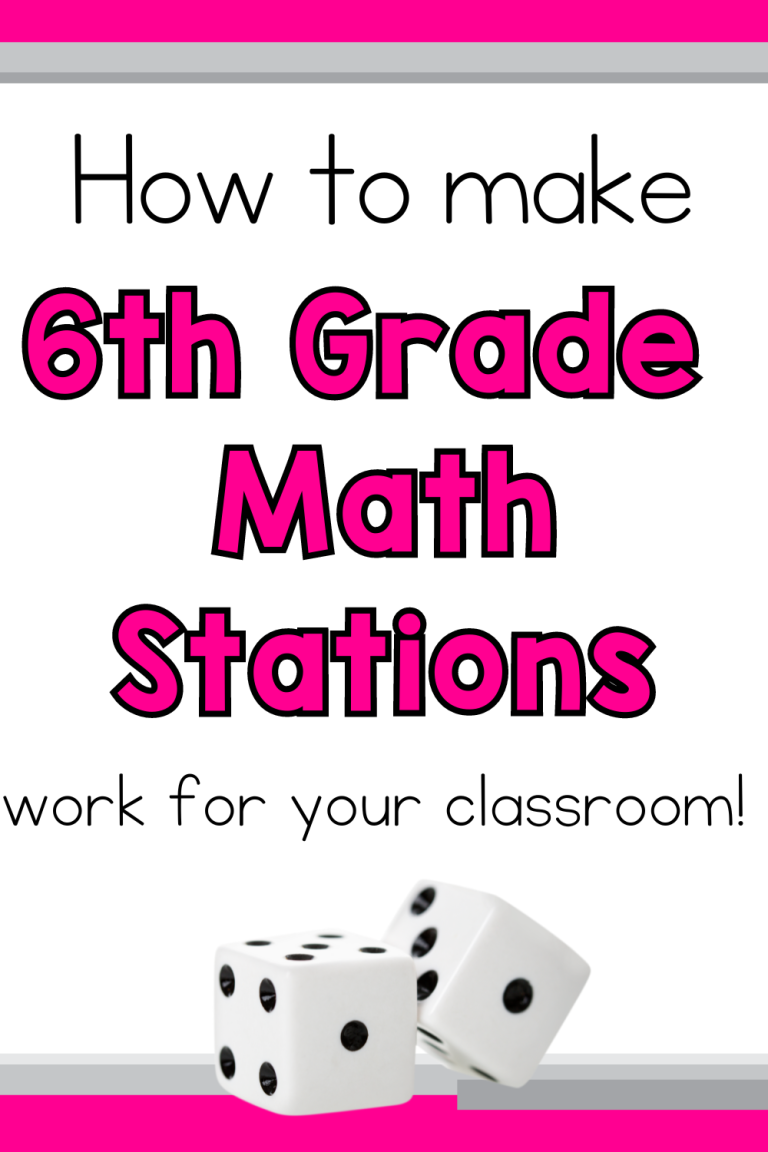How to Play Scoot for Math Practice
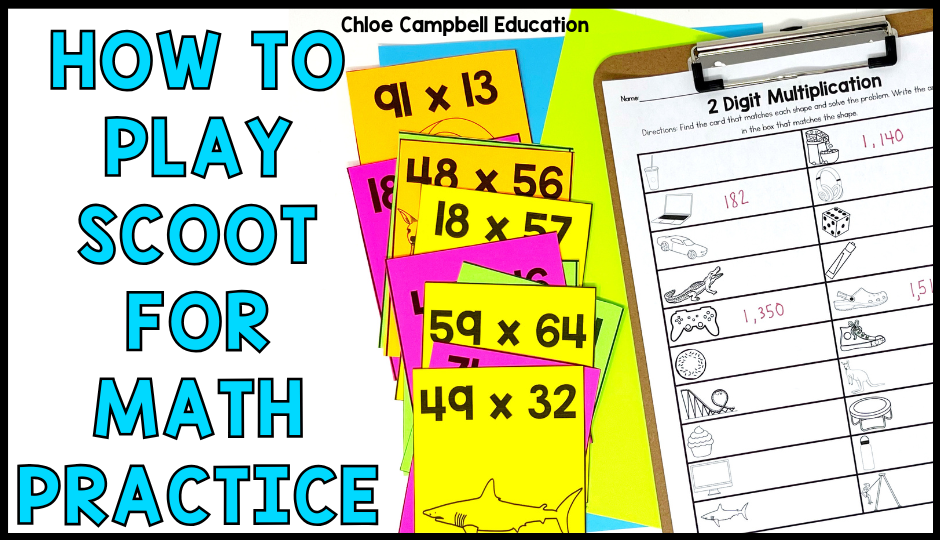
What is Scoot?
If you’re looking for a simple yet effective way to engage your students while reviewing essential math skills, Scoot is the answer! This whole class activity gets students up and moving while reinforcing key concepts in an interactive format. Students rotate around the room, solving problems on question cards, and recording their answers on a recording sheet. Scoot works for any subject area, but it’s especially powerful for math because it combines movement, collaboration, and skill practice all in one.
Scoot is a review game that works well for reinforcing topics like long division, multiplying fractions, or adding and subtracting decimals. It’s easy to set up, adaptable for any grade level, and requires minimal prep—making it a teacher favorite!
Preparation Time-Savers for Scoot
Use Durable Materials
Print Scoot cards on colored cardstock or laminate them to ensure they last through multiple uses. This is especially helpful for activities that you’ll revisit throughout the year or for activities you’ll break out again next year….your future self with thank you!
Organize by Topic
I store the Scoot cards in ziploc baggies. I’ll write the topic on the outside of the baggie in permanent marker so I can easily find them next year. This makes it easier to quickly grab the materials you need for a specific lesson.
How to Play Scoot for Math Practice
1. Set Up the Scoot Cards
Start by printing and preparing your scoot cards. These are the foundation of the game and feature the problems students will solve. For durability, consider printing the cards on cardstock or laminating them. Place the cards around the classroom, attaching them to walls or desks. Each card should be easily accessible and clearly numbered so students know the order in which to complete them.
- Tip: Spread the cards out so students have enough space to work without crowding. This ensures a smooth flow as they move from card to card.
2. Provide Students with Recording Sheets
Each student will need a recording sheet to track their answers as they move through the activity. Recording sheets not only hold students accountable but also provide teachers with a valuable tool to assess understanding and identify areas for improvement. Recording sheets keep students accountable and provide you with a quick way to assess their understanding afterward.
- Pro Tip: Use clipboards to make writing easier while students are moving from card to card. This small adjustment keeps the activity organized and ensures students stay focused on solving problems.
3. Explain the Rules
Before starting the game, explain the rules clearly to the whole class. Make sure students understand the following:
- There is no set amount of time for each card. Students solve the problems at their own pace and move on to the next card when they are finished. If a particular card is crowded with other students, they can skip to another available card and come back to it later. Emphasize the importance of staying focused and working quietly to maintain a productive environment.
- Extra Tip: Model how to solve one of the problems together as a class so students feel confident before starting. You can find more ideas like this in my post on hands-on math activities.
4. Review Difficult Problems
Once all students have completed the activity, come together as a class to review the answers. Invite students to share one or two problems they struggled with or found confusing, and review those as a class. Limit the review to just a few questions to keep the discussion focused. The rest of the answers can be assessed using the recording sheets, giving you insights into how well students grasped the skills and where further review might be needed.
- Extension Activity: Ask students to create a word problem that matches one of the questions they answered. This can serve as a fun and challenging way to deepen their understanding of the math concepts.
Why Scoot Works: The Benefits
Enhanced Student Engagement
Traditional worksheets can sometimes lead to disengagement, but Scoot transforms routine practice into an interactive experience. The movement involved caters to kinesthetic learners and breaks the monotony of seated work. It’s a great way to keep energy levels up while maintaining focus on academic goals.
Informal Assessment Opportunities
While students are engrossed in the game, teachers can circulate and observe. This real-time monitoring allows for immediate feedback and the identification of areas where students may need additional support. Reviewing recording sheets after the activity provides insights into individual and class-wide comprehension.
Versatility for Other Subjects
Although Scoot shines in math, it’s also versatile enough to be used in other subjects. For example, in science, you could create Scoot cards featuring questions on the water cycle or energy transformations. In language arts, cards might focus on grammar rules or vocabulary.
Common Mistakes and Troubleshooting Tips
Q1: What if students lose focus during the activity?
This is a common concern with any interactive activity. To help students stay on task, establish clear expectations before beginning. It’s also important to circulate around the room as students are also moving around the room. You can easily see when a student is struggling on a problem and can jump in to immediately help. Your presence also makes a huge difference – we all remember getting back to work as soon as the teacher walked by us!
Remind students that while moving around the room is fun, the focus is on learning. Another tip is to make this is an independent activity. The room will be quiet because nobody is talking as they solve their math problems. That will keep students on task, too!
Q2: How do I handle early finishers?
Encourage early finishers to double-check their answers or create their own math problems inspired by the Scoot questions. You can also have them help peers who might be struggling, fostering collaboration. You could even have these early finisher math activities nearby to help stop those, “I’m done! Now what?” questions.
Q3: What if some students feel overwhelmed by the number of questions?
There are only twenty questions in each of the scoot activities I’ve created – and there’s a reason for that. It’s a perfect number to keep students from being overwhelmed but it’s enough questions to keep them engaged and practicing math. If you have more questions, you could break the activity into smaller segments. For example, complete half the cards in one session and the remaining cards in another. This approach reduces pressure and gives students more time to engage with each question.
Q4: How can I make Scoot accessible for diverse learners?
Provide differentiated recording sheets for students who need extra support. For instance, you might include partially filled-in answers or hints. Additionally, pair students strategically so they can support each other during the activity.
I will often spend more time with my lower level students during these types of activities. If a student needs extra support, they can always visit the teacher for extra help. This is a great 1 on 1 time to reteach any skills, too!
Q5: What if there isn’t enough space to spread out the cards?
If space is limited, consider using tables or desks instead of walls. You could also move the activiity to the hallway: just tape the cards in the hallway and have students answer questions around the hall.
Printable Math Scoot Game
Ready to get started with Scoot but don’t want the hassle of creating your own materials? My Solve the Room Math Activities Bundle includes everything you need for a stress-free and engaging math Scoot activity! Here’s what you’ll get:
- 13 Math Topics: Covering skills like multiplying fractions, long division, adding and subtracting decimals, and more.
- 20 Scoot Cards Per Topic: Pre-made and ready to use.
- Recording Sheets: Perfect for student accountability.
- Extension Activities: Includes prompts for creating matching word problems.
- Answer Keys: Save time and ensure accuracy during review.
This bundle is designed for teachers who want a no-prep, engaging way to reinforce essential math skills while keeping students excited about learning. It’s perfect for whole class activities, small group instruction, or even independent practice.
Save These Tips for How to Play Math Scoot
Pin this post so you’ll always have these tips handy for your next Scoot activity! Whether you’re teaching 4th grade, 5th grade, or beyond, learning how to play Scoot can transform your classroom into a dynamic space for engagement and mastery. If you’re looking for more creative math ideas, don’t miss my posts on 5th grade math games for the classroom, hands-on math activities, and standardized test prep ideas for math.
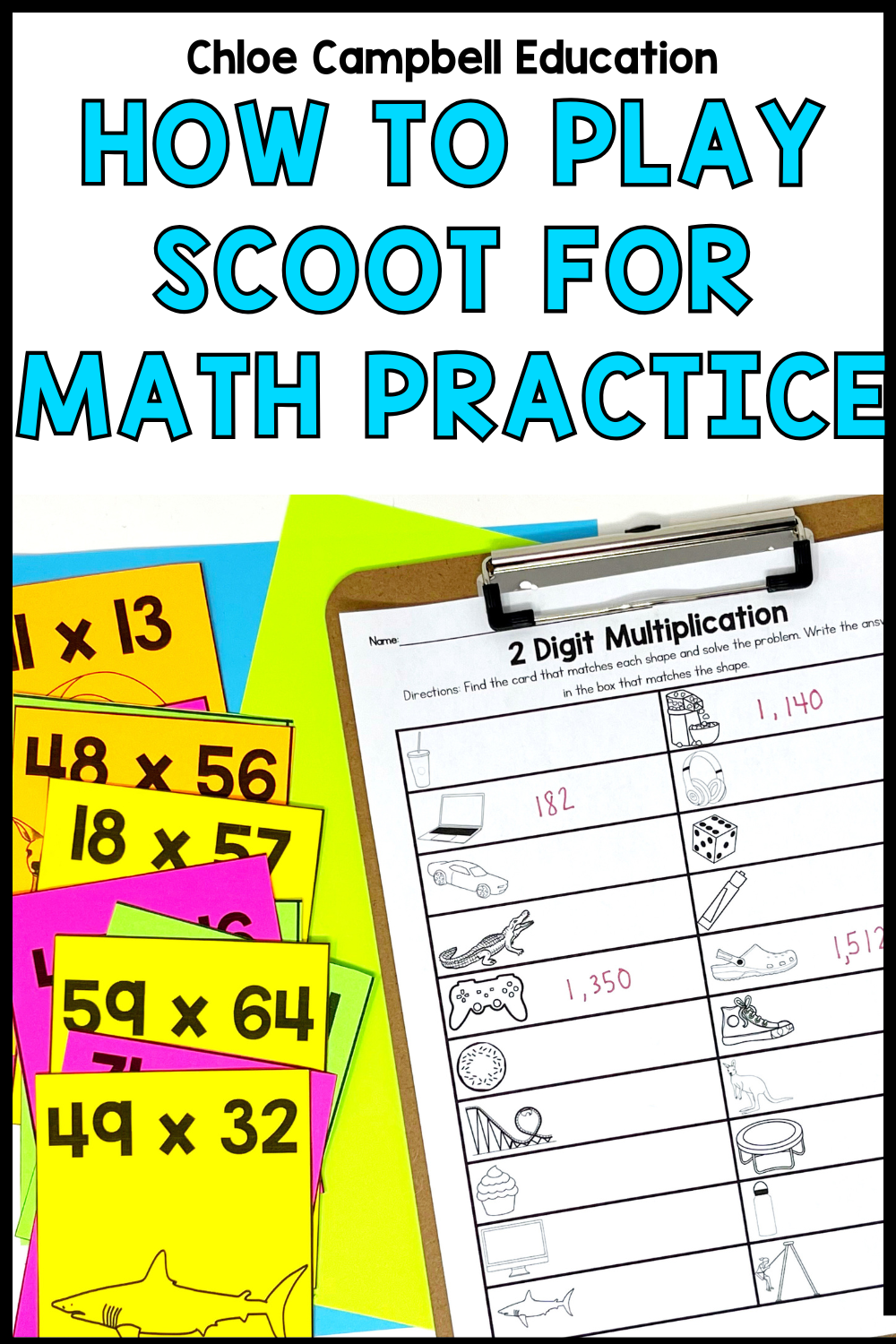
Let’s make math fun, interactive, and impactful for every student!

